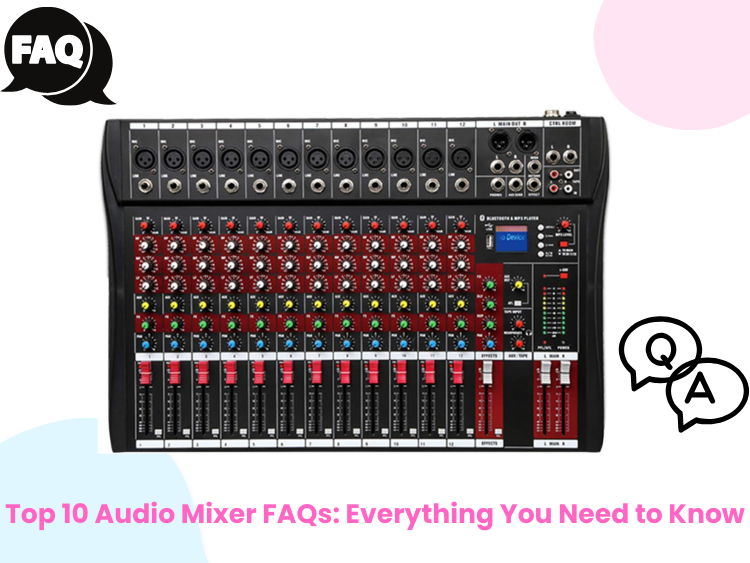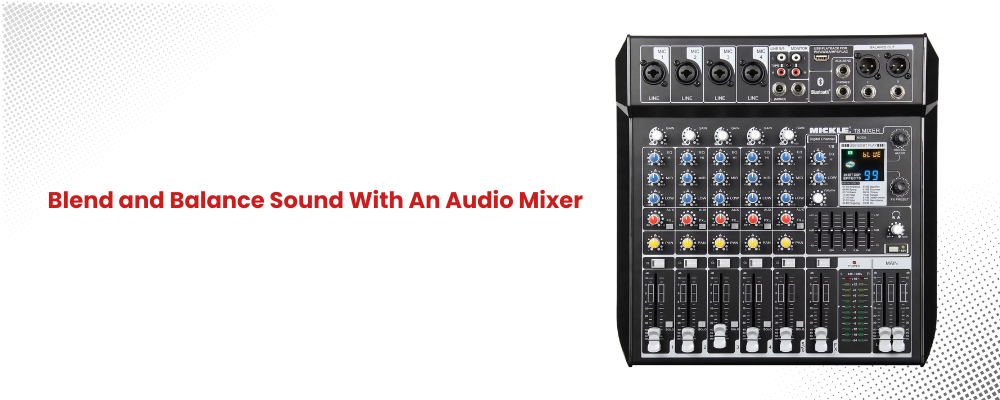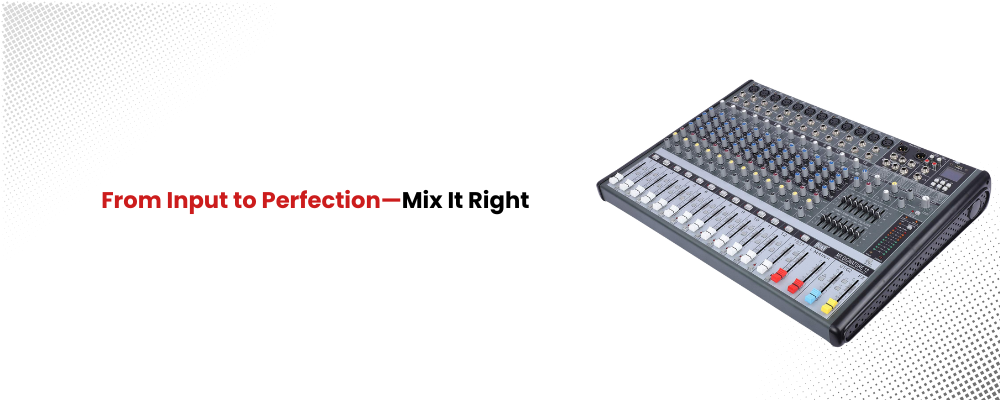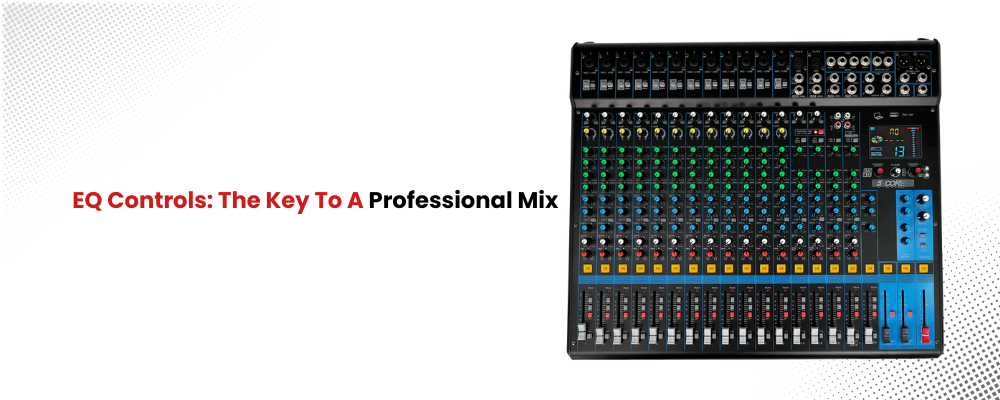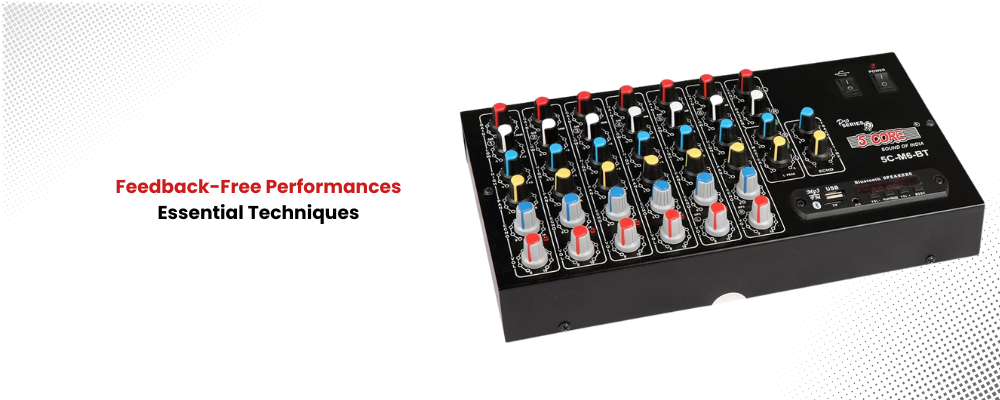Anyone who makes music, sounds, or material worth their salt knows that you need an audio mixer to get great sound quality. If you want to make audio that sounds professional, whether you work in a live setting, a studio, or on a show, you should know how an audio mixer works. In this article, we answer some of the most common questions people have about audio mixers, whether they are new to the art or experienced pros.
1. What is an audio mixer, and what does it do?
An audio mixer, also called a mixer or a mixing desk, is a device that combines audio data, routes them, and changes the way they sound. Sources of the Inst Type type can be mics, instruments, and playing devices. Adjusting the volume, shaping the tones (equalizing), and adding effects to create a better sound output are some of the main reasons why mixers are used. Mixers mix the voices and instruments together so that the crowd can enjoy a proper mix during live shows. They let sound experts have more control over the sound before it’s recorded or streamed in a studio.
2. What are the different types of audio mixers?
Audio consoles can be broadly categorized into three types: analog, digital, and powered mixers. Analog Mixers: Traditional and with a tactile feel, they do not require digital processing. In contrast, digital mixers have a more advanced interface that grants built-in effects, automation, and the capacity to recall settings. They are perfect for people borderline on the creative side and need more flexibility and control. As they include a built-in amplifier, powered mixers are ideal for small venues where external amplification is not available. Which one you choose depends on the complexity of your setup and your particular needs.
3. How do I choose the right audio mixer for my needs?
A lot of things go into picking the right mixer. You should think about how many audio sources you want to mix, whether you need built-in effects, and, most importantly, what kind of shows or recordings you’ll be doing. For a small show or a solo artist, a simple mixer with four to six channels will work. For a band or live event, on the other hand, you might need 12 to 24 channels. Digital mixers give you more power and a lot of presets, which makes them the best way to set up your sound and quickly remember it. Another issue is price. Analog mixers are usually less expensive than digital ones, but digital ones have more features and cost more.
4. What is the difference between gain and volume?
A lot of people mess up gain and volume, but in a sound mixer, they are very different. Gain changes the intensity of the information that comes into the mixer so that it’s not too weak or too strong. You won’t be able to hear clear sound if the gain setting is too high. That being said, volume controls how loud the information is after it has been processed. A clean mix without distortion is achieved by gain staging, which means adjusting your gain to the right level before volume is taken into account.
5. How do EQ controls work on a mixer?
The process of equalization, or EQ, lets people change the frequencies of an audio stream to make it sound bigger and stronger. There are simple low, mid, and high EQ settings on most mixers. Low frequencies change how bassy sounds are, midrange frequencies help make singing and instruments sound warmer and more present, and high frequencies change top parts like drums and acoustic details. Parametric EQ, which lets you make changes on a much finer level, may be available in a more powerful mixer. When used correctly, EQ can make a mix sound more natural and finished, letting different parts fit in well with the overall sound.
6. What is phantom power, and when do I need it?
Most newer mixers have phantom power, a +48V power option for condenser mics, and some active DI boxes. Condenser microphones will also not work without phantom power, while dynamic microphones do not rely on external power. Phantom power is essential for condenser mics, which require a higher voltage to operate, allowing them to pick up sound more sensitively than traditional dynamic mics. If you happen to be using dynamic microphones, that would typically not be switched on, because they don’t normally need it, and in some cases, they could even be damaged if they aren’t careful.
7. How can I prevent feedback in a live sound setup?
Feedback happens when a microphone captures its own amplified sound from the speakers, resulting in a grating, high-pitched screech. A careful arrangement of microphones and speakers is needed to avoid feedback. Preventing feedback as much as possible As long as microphones are positioned away from loudspeakers, and the microphones are pointing in the right direction, the chance of feedback happening is minimized. Lowering microphone gain and using directional microphones is also helpful. A good way to deal with this is through the use of a graphic equalizer in order to help detect and cut problem frequencies responsible for feedback. Following these steps will keep sound throughout live performances and events appropriate and clear.
8. Can I use an audio mixer for live streaming and podcasting?
Many current mixers include a USB connection, making them perfect for live streaming and podcasting. A USB mixer connects directly to a computer for high-quality audio. Live streamers and podcasters benefit from built-in effects, numerous microphone inputs, and Bluetooth background music. Many common mixers include software for digital sound adjustments. Choosing a mixer with the proper features may improve your podcast or panel discussion.
9. What are aux sends and returns, and how are they used?
Audio signals may be sent to effects processors, stage monitors, and headphone mixes via auxiliary sends and returns. Aux transfers copied audio signals from one or more channels to an external device. The aux return returns the processed signal to the mixer. Live musicians may require a specific monitor mix, while studio musicians may employ external reverb or delay devices. Users get mixed control by learning aux sends and returns.
10. How do I connect my audio mixer to the speakers?
Powered or passive speakers determine how to connect an audio mixer to them. For powered speakers, XLR or 1/4-inch cables link the mixer’s primary output to the speakers. Passive speakers need a power amplifier between the mixer and the speakers. The mixer’s primary output powers the speakers via the amplifier. Connecting speakers properly and gradually raising the volume avoids speaker damage and ensures clean audio.
Final Thoughts
An audio mixer is a technical equipment that is used to shape and control sound levels in different settings that include live performance, studio recording, and podcasting. Learning how it works also leads to improved sound quality and more control over users’ mixes. Whether you are a novice or seeking to polish your audio mixing skills, understanding how to use a sound mixer can be a game changer in producing a better audio experience. And if you are still not sure, go and learn more about this interesting world of audio blending.

